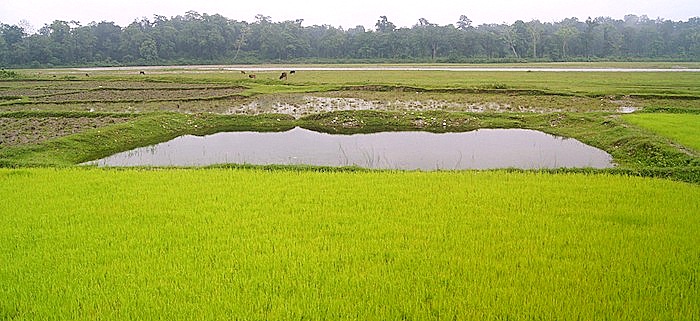An Asian in love with her rice and tea author Anupa Roy share her stories about Bengali. A Bengali bride whether Hindu or Muslim cooks the customary rice for her in laws in the Bride Rice Ceremony – Bou Bhaat; a mere ritual as a sweaty bride isn’t a pretty sight.
Bengal is that bit above the Bay of Bengal, now Bangladesh and West Bengal. The colonists divided it in a huff in 1947, when they had to leave India. It is frontier land, lying between the Himalayas and the Bay; between southwest and southeast Asia and with nice little paths perched thousands of feet high, linking it to China and Tibet. Bengal is a delta still forming, by the rivers Ganges and the Brahmaputra. In this web of land and water rice, fish, vegetables and mosquitoes grow in great abundance.
‘A Bengali is made in fish n rice’
Originally cultivated by the Proto-Australoids – the first settlers of Asia, wild rice grew here since prehistoric times. Scientists guess rice was domesticated twice, once along the banks of Yangtse in China and again in northeastern foothills of the Himalayas.
Rice attends a Bengali from birth to after death.

It is first fed to a six-month-old in the Rice Ceremony – Annaprashon. And in the last rites to the souls of the dead as ‘rice-ball offerings’ – Pindodaan.
A Bengali bride whether Hindu or Muslim cooks the customary rice for her in laws in the Bride Rice Ceremony – Bou Bhaat; a mere ritual as a sweaty bride isn’t a pretty sight.
In any Hindu worship both husked and unhusked rice is offered, another common legacy of Southeast and South Asia.
‘May my child live in milk and rice’
Bengal’s favourite dessert is rice pudding or Paaesh, later adopted in a watered-down version by the British. Milk is thickened over a slow fire with rice cooking in it and molasses to sweeten it till the whole forms a custard-like consistency, but with the rice grain still separate.
Once Bengal grew three crops of rice annually and rice formed the main meals. It still does. If we haven’t eaten rice on a day, we haven’t eaten at all.
A description of a Bengali meal from the medieval times – hot rice, white grains, long and separate, with ghee of cow’s milk to give a golden hue, tiny ‘maurala’ fish in light gravy and tender greens from the jute plant fried to a crisp. If a wife serves her husband this, he must consider himself lucky.
This basic meal varies the fishes and greens and remain the mainstay of the Bengali diet in village and city. But time has brought in new spices and vegetables to embellish it, along with new cooking styles.
The indigenous races were overlain with the Turks, Persians, followed by European colonists. There were also migrations of Tais, Tibeto-Burmans and other southeastern races – all rice eaters. Races inter-mingled, became Bengali and learnt to love their ‘fish n rice’.
To plain ‘boiled’ rice was added multi-flavoured rices,
Pulaus, biriyani and a host of spices
An early 1903 Bengali cookbook is by a lady – Pragyasundari, who cooked, experimented and ‘researched’ Bengali food – a very East-Indian Mrs. Beaton. She has much to say about rice, from how to clean and prepare, to which varieties are good for what dishes. Much of traditional cooking is forgotten, but the book has seen new life in a modernized edition. And rice rules life in Bengal.
More about the writter. . When she is not reading or being a mother and wife, she writes on — what else — rice and tea!